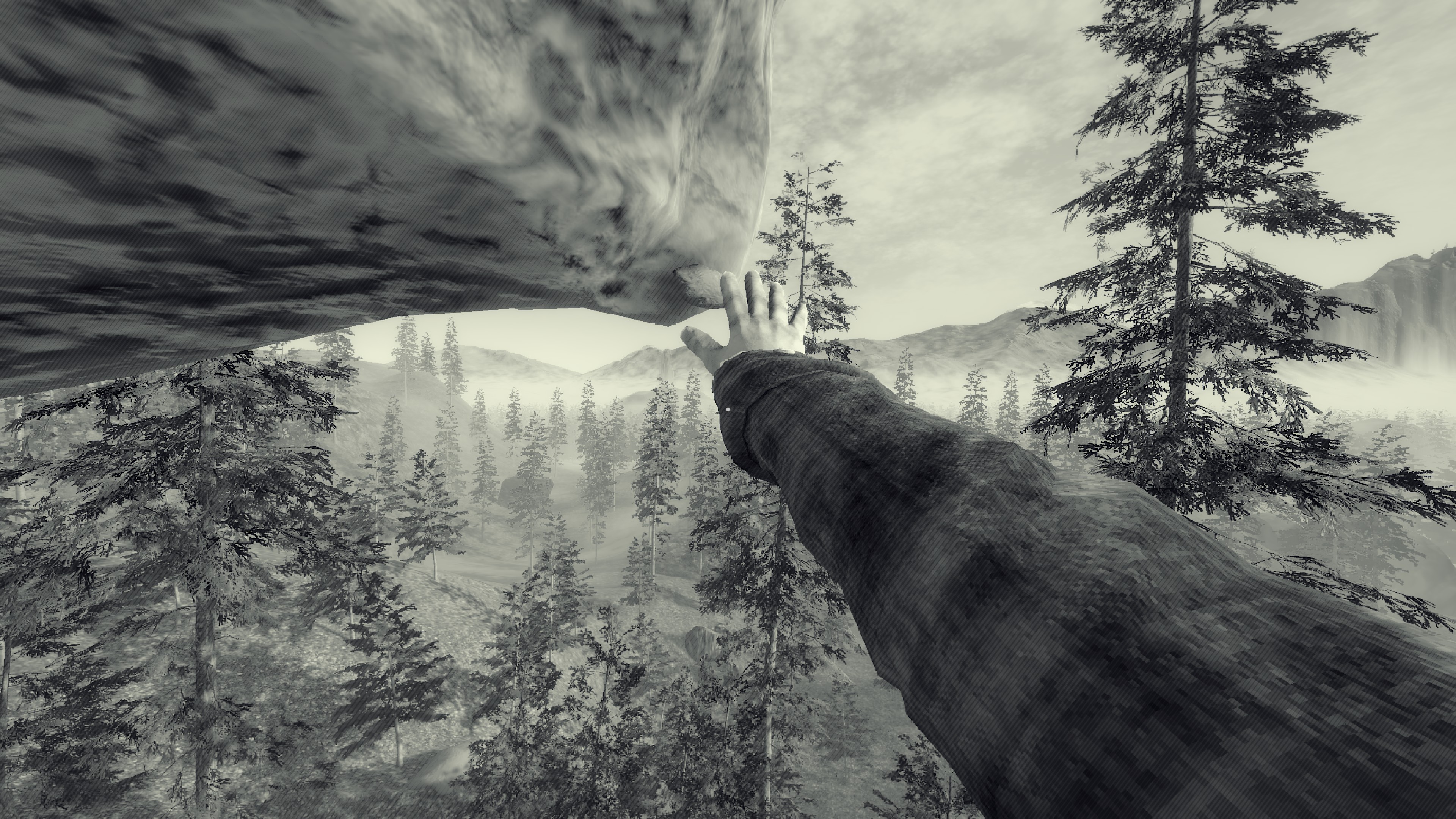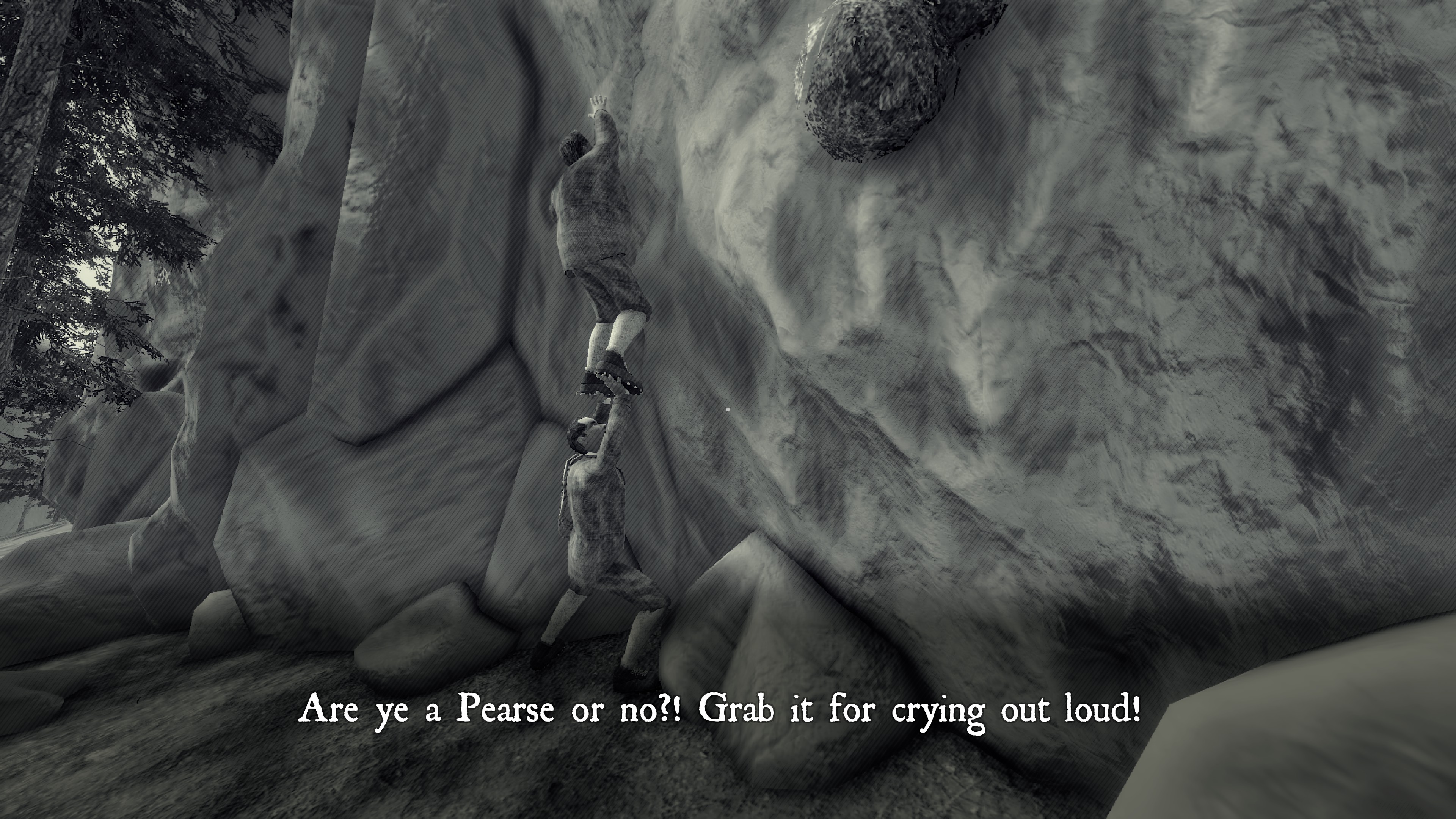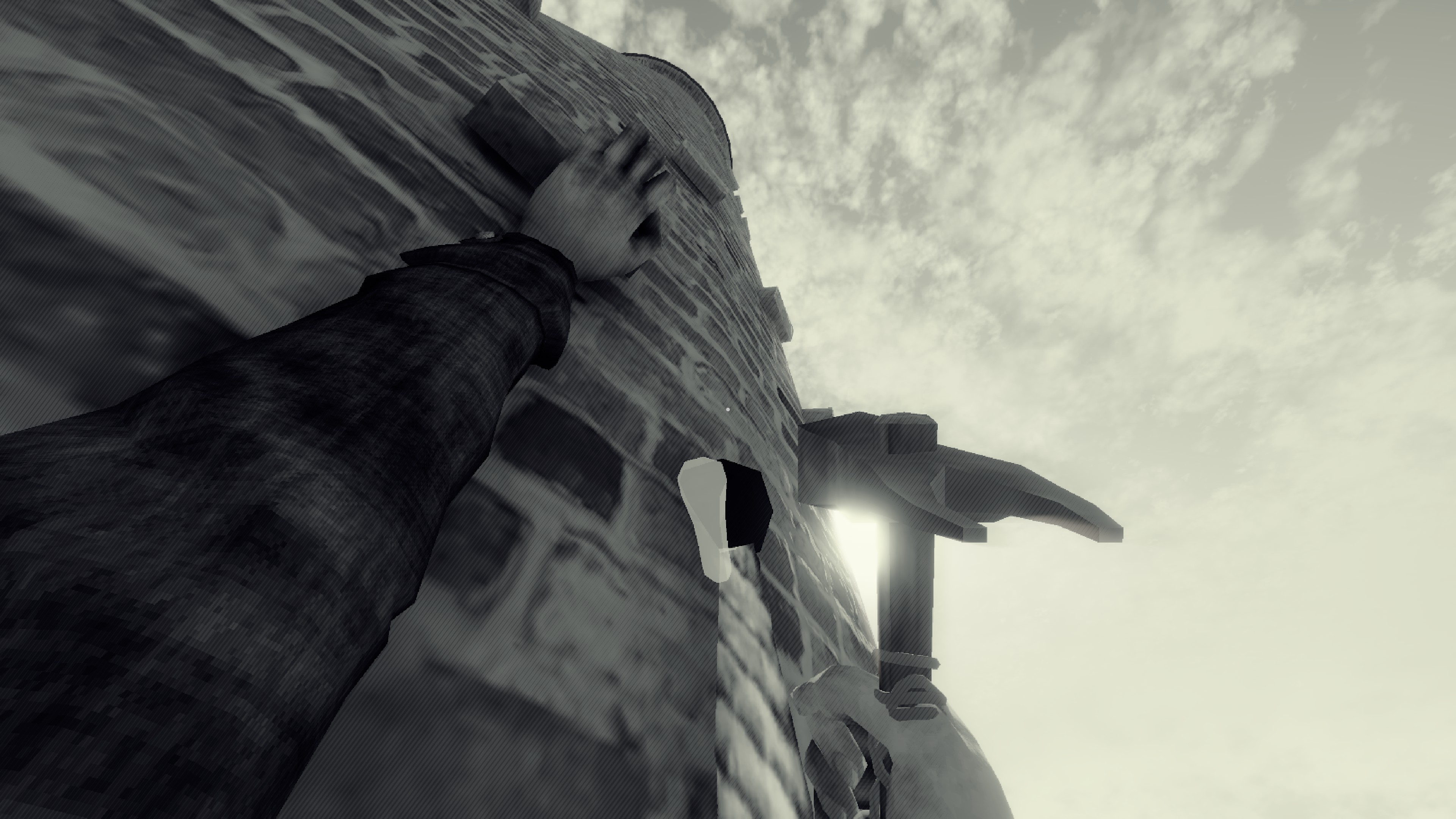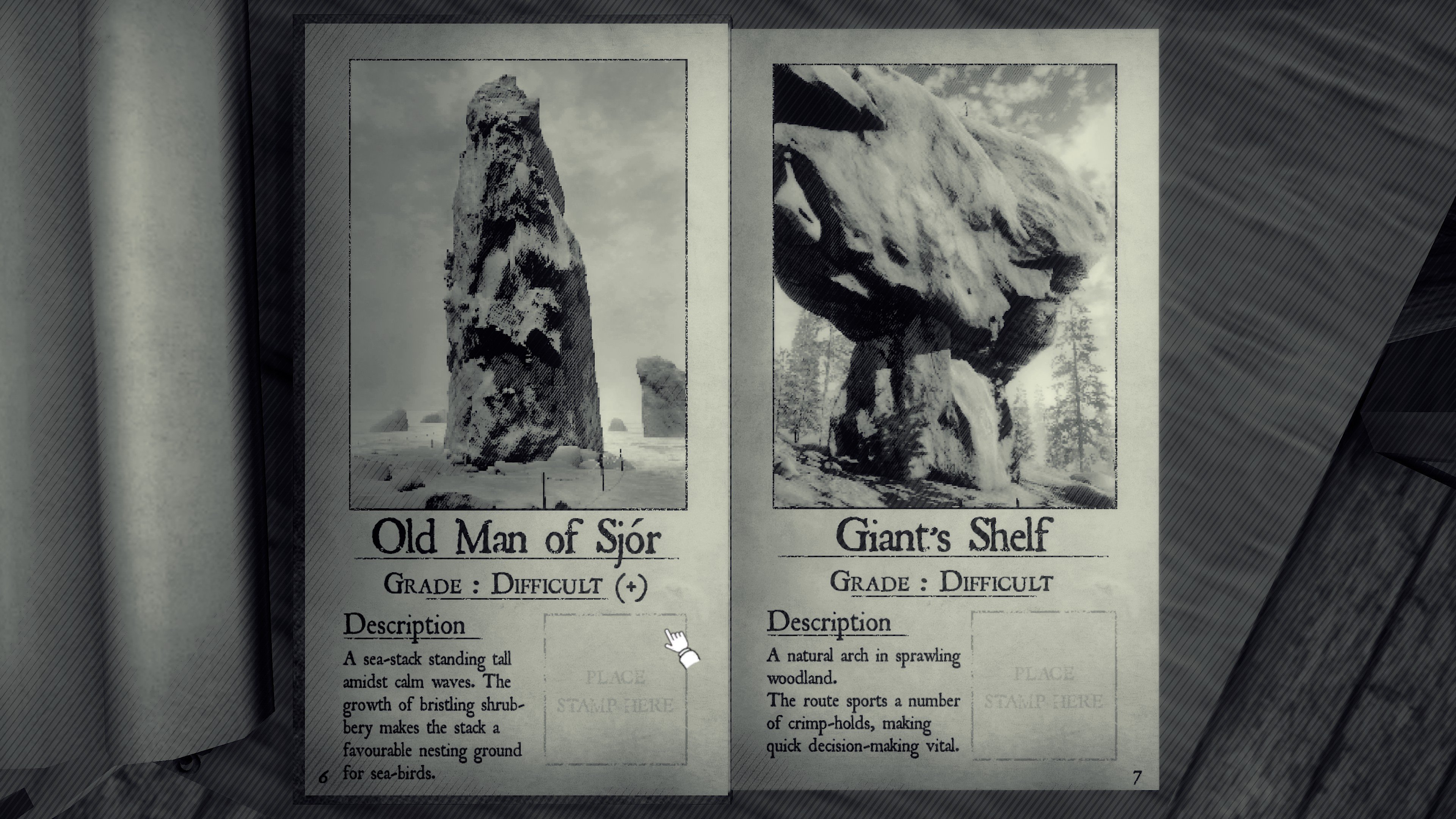
I've always been fascinated by mountaineering, but I confess that I've never really understood it. I've read Into Thin Air and Touching the Void and watched the films based on them, as well as others like Free Solo, The Dawn Wall and the terrifying, heartbreaking The Alpinist. In each case I marvel at the incredible skill of professional climbers, and the absurd peril they put themselves through to enjoy their sport.
But for the life of me, I could never fathom why. Why engage with a sport that can so easily kill you, regardless of how good you are at it. One that will kill half of your friends and peers even if you personally emerge from your career unscathed. When George Mallory was asked why he wanted to climb Everest, he allegedly responded "because it's there!" But back in the 1920s, Everest wasn't covered in litter and climbed by 15 millionaires a week.

I didn't come to Peaks of Yore expecting an answer to this question. I came to it because I like climbing games as much as other mountaineering media, and this one had somehow escaped my notice. Released in 2023, this 19th-century physics adventure throws you back to the primordial days of alpinism, casting you as a tweed-wearing gentleman adventurer who has challenged themselves with ascending the 20 Fundamental Peaks of The Great Gales, a mountain range that blends the crags and valleys of the Lake District with the more precipitous peaks of the Alps.
Presented in sepia-tinged monochrome (though colour is available if you want it), Peaks of Yore starts out with the vibe of an afternoon hike. The first couple of climbs you do are simple bouldering challenges designed to introduce the basic mechanics, which involve pressing the mouse buttons to reach out alternate arms to clasp onto rock outcrops, before using the A + D keys to swing yourself up to the next handhold.
Initially, it doesn't seem like the most serious climbing simulation. There's something faintly comical about your climber's long, rubbery arms, which combined with the swinging motions make you feel more like an ape than a mountaineer. As you proceed through the first few levels, you also encounter an eccentric cast of fellow climbers, such as a pair of brothers trying to boost one-another up the side of a cliff.

It's all a bit 'tally-ho, chaps!' and although I enjoyed the gentle humour and generally supportive nature of your fellow climbers, Peaks of Yore didn't feel particularly substantial. My feelings about the game changed quickly, however, once I reached the lighthouse. This isn't a colourful name for a peak; it's exactly what it sounds like—a looming coastal watchtower made of crumbling brick that forms the first intermediate route of the game.
Up to this point, I'd scaled all the challenges without much difficulty, monkey-swinging my way to the summit while blithely ignoring all the game's advice about ropes and pitons and whatnot. I carried on in this manner until, a third of the way up the lighthouse, I grabbed an exposed brick and it pulled clean free of the wall, sending me plummeting to the ground.
The biggest gaming news, reviews and hardware deals
Keep up to date with the most important stories and the best deals, as picked by the PC Gamer team.
Luckily, the drop proved merely inconvenient—you can fall a good thirty feet in Peaks of Yore before starting to take damage. Nonetheless, it startled me into taking this climb more cautiously. And just as well, because the lighthouse, it transpires, is a gnarly ascend. As well as loose bricks that pull right out of the lighthouse wall, there are bricks that slide slowly out under your weight. It's also the first climb where some handholds lie beyond your character's orangutan-like reach, forcing you to leap between holds without the guarantee that the brick you grasp on the far side will hold your weight.

By the time I'd ascended two thirds of the lighthouse, I'd become much more measured in my climbing, testing new bricks with a quick grab to see if it slipped before committing to the move, and roping up whenever a leap presented itself. After passing a particularly tricky obstacle that involved leaping around a corner of the lighthouse to catch a brick I couldn't see, I thought I was home.
I was genuinely frightened.
And then I realised that I'd somehow slipped free of my rope.
With no way to get back to my lifeline, I had to free solo the remaining third of the lighthouse without making a single mistake. Even if I survived the fall—which seemed unlikely at my present height—I'd have to start the whole climb from scratch.
I was genuinely frightened. Getting to this point had been enormously challenging, and I really didn't want to have to repeat the climb. Yet once I'd accepted the reality of the situation, my terror was replaced by a strangely unyielding focus. My mind shed all my other worries, not just the chasm beneath me, but all the emails I need to send, the gaping hole in my overdraft, the tax bill looming at the end of January, everything fell away save the staggered column of bricks between me and the top of the lighthouse.

Afterword, as I stood on the lighthouse's external balcony gazing across the simulated shoreline, I thought 'Oh, is that the feeling people chase to the top of the world?' that Zen-like state where your brain just dumps all the clutter and attunes your entire body to the completion of one, singular goal? And if a silly game where you climb cliff-faces as a tweed-wearing chimp can afford me that brief taste of serenity, what must it feel like to be several thousand feet up, spitting the laws of physics as you flow seamlessly to a summit?
This isn't me declaring a new life of mountaineering—my legs start to go when descending one of those long escalators on the London underground. Merely that playing Peaks of Yore has helped me comprehend a sport I've admired but also been baffled by for many years. I've played and enjoyed other climbing games before, like Crytek's excellent VR sim The Climb and DontNod's breathtaking vertical adventure Jusant. But the configuration of Peaks of Yore's challenges sparked a part of my brain that those games didn't, despite being a less refined experience than either.
Needless to say, I'll be continuing my climbing career in Peaks of Yore. I've already sampled many of its deeper delights, which fold in timed 'crimp' holds, seagulls that nip at your hands as you scale a mildewy shoreline stack, and even ice-climbing on its more extreme routes. Last year also brought a DLC pack that adds proper alpine ascents, which I can't wait to get my calloused mitts on once I finally beat the highest peaks of the Great Gales. Watch out, Wuthering Crest, I'm coming for you.
Rick has been fascinated by PC gaming since he was seven years old, when he used to sneak into his dad's home office for covert sessions of Doom. He grew up on a diet of similarly unsuitable games, with favourites including Quake, Thief, Half-Life and Deus Ex. Between 2013 and 2022, Rick was games editor of Custom PC magazine and associated website bit-tech.net. But he's always kept one foot in freelance games journalism, writing for publications like Edge, Eurogamer, the Guardian and, naturally, PC Gamer. While he'll play anything that can be controlled with a keyboard and mouse, he has a particular passion for first-person shooters and immersive sims.

